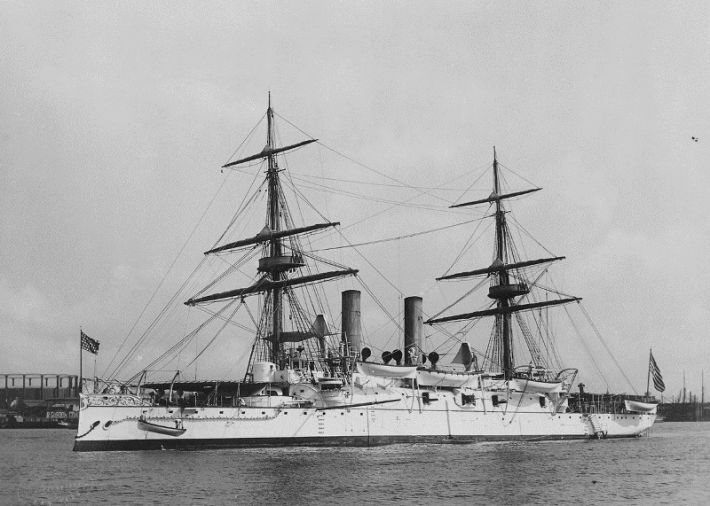It happened 122 years ago today. President Grover Cleveland describes it in his message to the U. S. Congress, dated December 18, 1893.
“And so it happened that on the 16th day of January, 1893, between four and five o’clock in the afternoon, a detachment of marines from the United States Steamer Boston, with two pieces of artillery, landed at Honolulu. The men, upwards of 160 in all, were supplied with double cartridge belts filled with ammunition and with haversacks and canteens, and were accompanied by a hospital corps with stretchers and medical supplies. This military demonstration upon the soil of Honolulu was of itself an act of war. . .”
By nightfall of the next day, the Kingdom of Hawaiʻi had been illegally overthrown.
Hawaiʻi’s people today live in the resulting repercussions of that infamous day. For some, reflection on those historical events still conjures up the ʻeha (pain, hurt) of being wronged.
There may never be an adequate outlet to express the ʻeha, nevertheless, this story commemorates the 122nd anniversary of the illegal overthrow and honors some of the great expressions of aloha ʻāina (patriotism) coming from Hawaiʻi’s aliʻi (monarchs) and lāhui (people).
A Mele
A few short weeks after the overthrow, the mele “He Inoa no na Keiki o ka Bana Lahui” was printed in the Hawaiian language newspapers. Composed by Ellen Kekoaohiwaikalani Wright Prendergast, this song, better known by other names such as “Mele ʻAi Pōhaku” and “Kaulana Nā Pua” becomes emblematic of native resistance to foreign machinations. Learn more about the mele in an essay by Hawaiian scholars Kīhei and Māpuana de Silva
A Protest
In the months that follow, Hawaiʻi’s citizenry, both Hawaiian and non-Hawaiian, protest the Provisional Government. In accordance with the example set by Queen Liliʻuokalani herself, these protests were non-violent acts of resistance. Two newspapers of the time, “Hawaii Holomua” and “The Daily Bulletin” describe the protest in articles entitled, “A Solemn Protest,” and “Protest of the People.”
A Garden
Uluhaimalama garden in Pauoa was planted in October of 1894 as another symbol of native resistance. The garden was a source of flowers for the queen who would receive them wrapped in the newspapers of the day, her only means of getting news of the outside world during her imprisonment. The garden also served as a vehicle of resistance for the people, for they understood the symbolic meanings in its name and flora. Read more about the garden in an 1894 issue of “Ka Makaainana,” and in a 2009 Honolulu Advertiser article entitled, “Reviving queen’s garden Uluhaimalama.”
A Petition
The fall of 1897 saw a massive petition drive which encompassed the islands, collecting 38,000 signatures supporting Queen Liliʻuokalani and in opposition of annexation. These documents, known as the Palapala Hoopii Kue Hoohui Aina or Petition Protesting Annexation were presented to the United States Congress as proof that the great majority of Hawai‘i’s citizenry opposed annexation of Hawaiʻi to the United States. Read more about the petition in the MANA magazine article, “Kūʻē: Testimony of Thousands.”
Aloha ʻāina remains evident today as Hawaiians and non-Hawaiians alike give impassioned testimonies at government-sponsored meetings, the most recent being the Department of Interior community meetings examining the Hawaiian sovereignty issue.
Also, contemporary observations of kingdom holidays such as Lā Hoʻihoʻi Ea (Restoration Day) and Lā Kūʻokoʻa (Hawaiian Independence Day) serve as reminders of Hawaiʻi’s history and as powerful political statements.
Numerous mele calling for Hawaiian independence and unity have been composed and recorded, and have become staples of mainstream music in Hawaiʻi. A few notable examples are “All Hawaiʻi Stands Together,” “Living in a Sovereign Land,” and “Alu Like.”
The movement to reclaim and revitalize Hawaiian culture and language through education has begun, in big and small ways. Please take some time to think about aloha ʻāina – what it means today and how it connects to the mission and vision of Kamehameha Schools.
And so it happened that on the 16th day of January, 1893, between four and five o’clock in the afternoon, a detachment of marines from the United States Steamer Boston, with two pieces of artillery, landed at Honolulu. The men, upwards of 160 in all, were supplied with double cartridge belts filled with ammunition and with haversacks and canteens, and were accompanied by a hospital corps with stretchers and medical supplies. This military demonstration upon the soil of Honolulu was of itself an act of war…
President Grover Cleveland to the U. S. Congress in 1893

U.S.S. Boston transported U.S. Marines to Hawaiʻi to help carry out the overthrow.

More than 160 marines disembarked in Honolulu.
TAGS
CATEGORIES
Kaipuolono Article, Newsroom, Department News, Features
Print with photos
Print text only










